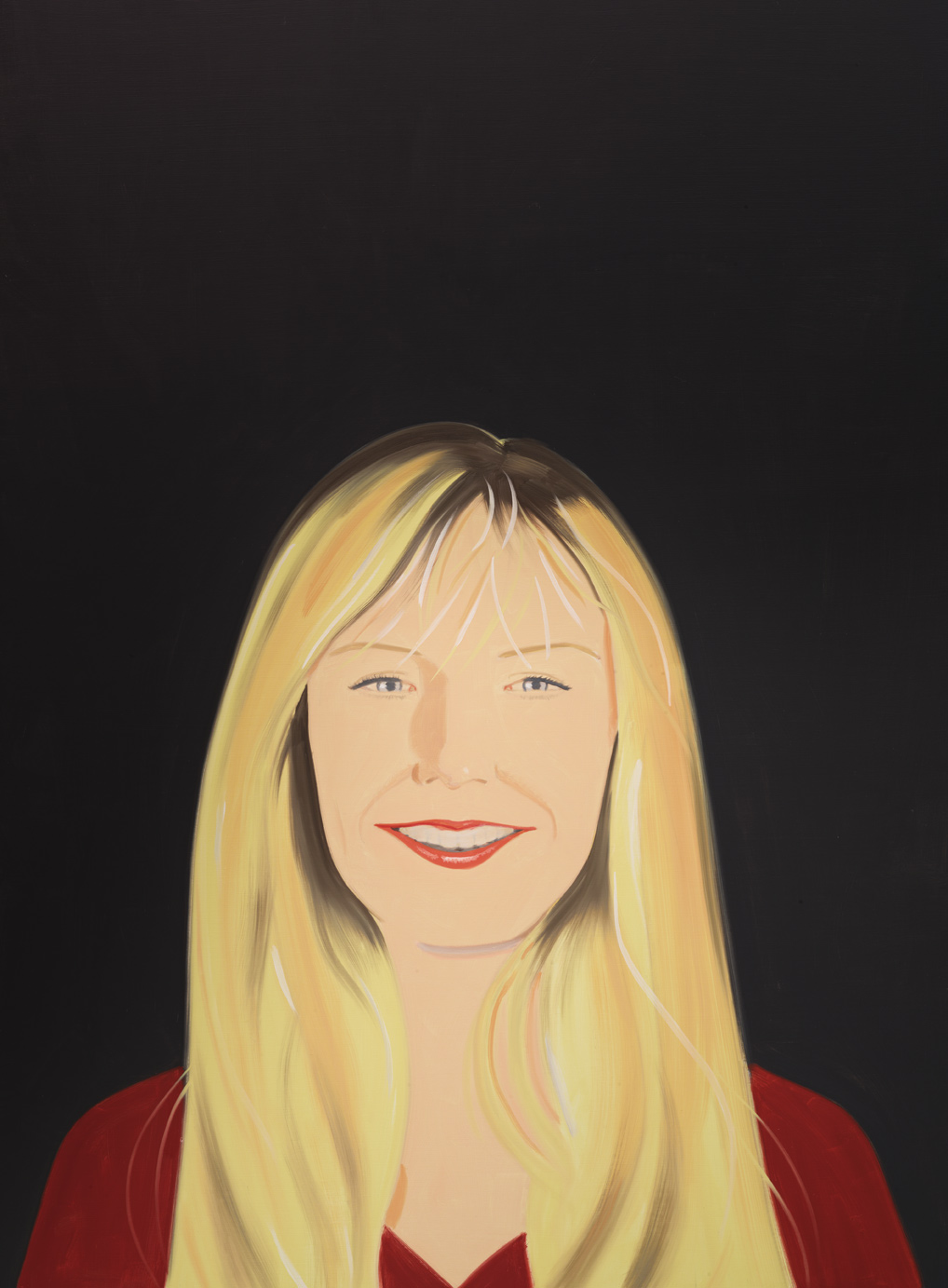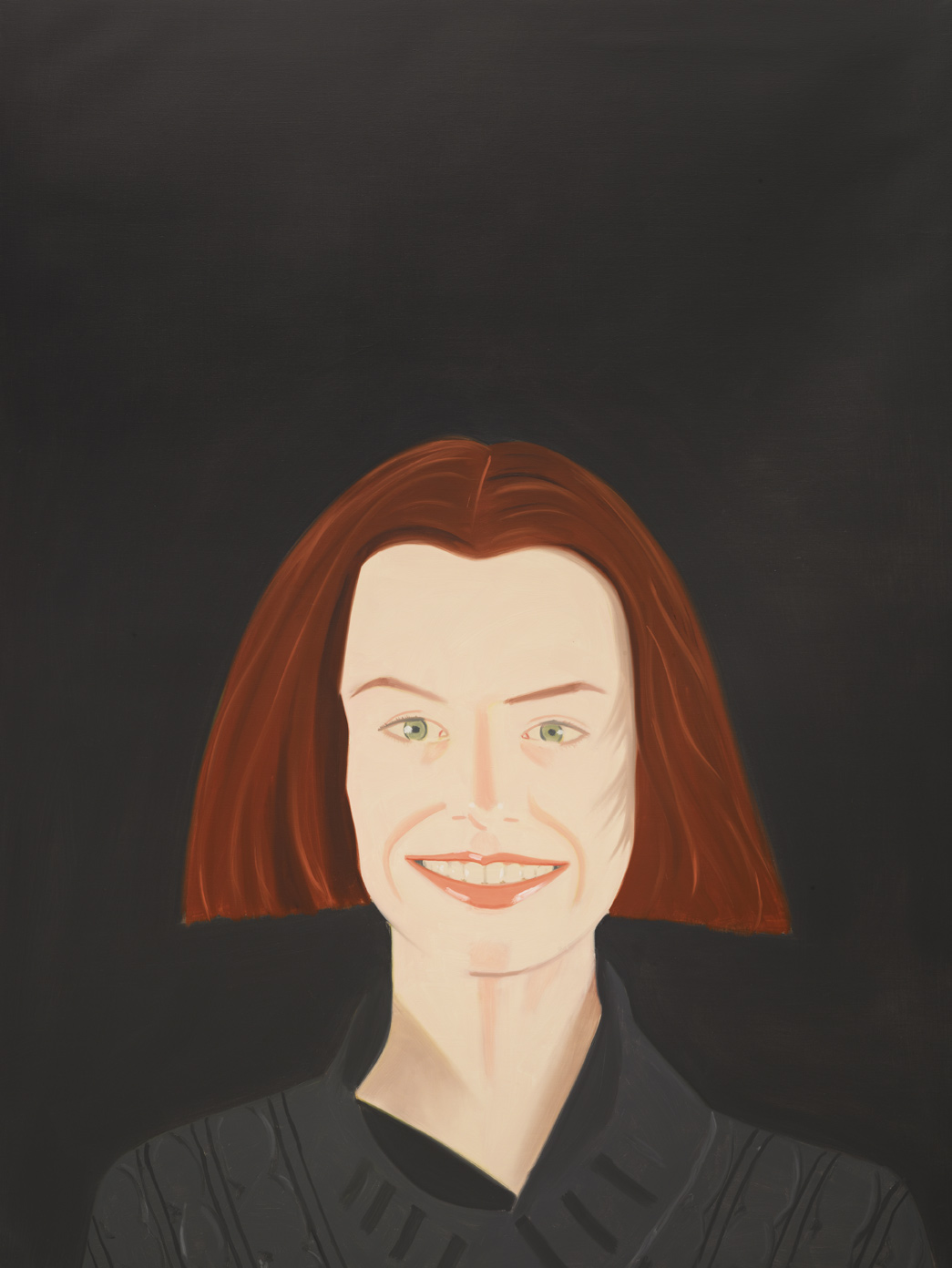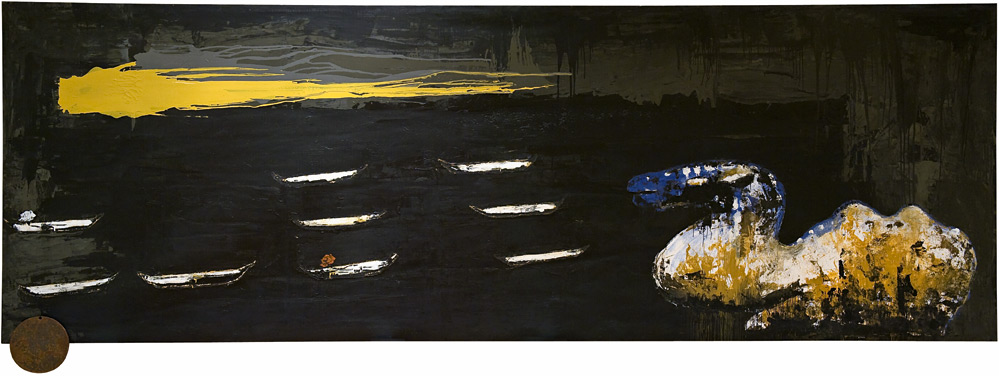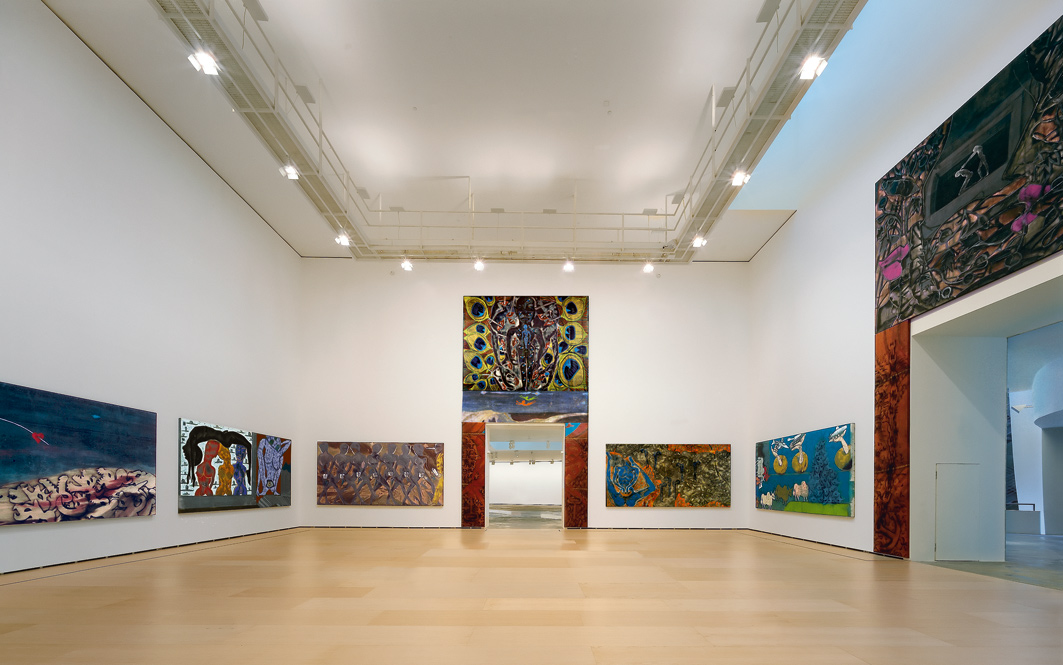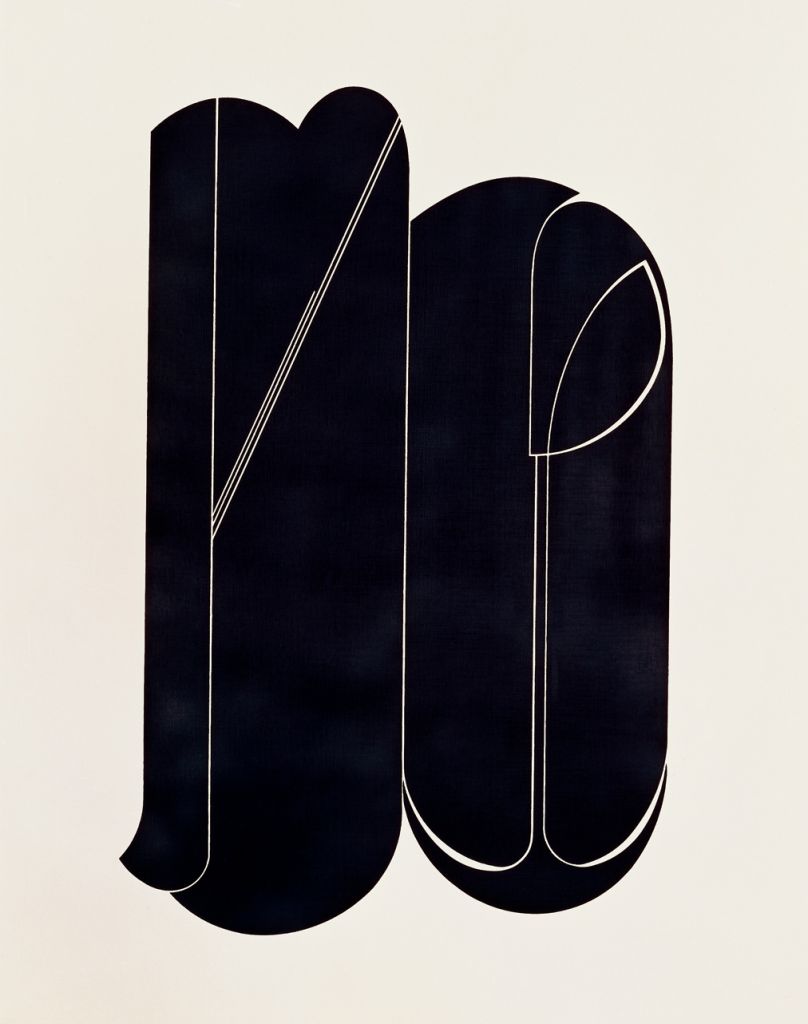Smiles
1993–94Oil on linen243,8 x 182,9 cm
At his first solo exhibition, at the Roko Gallery, New York, in 1954, Alex Katz presented small-format figurative works painted with loose brushstrokes. In part, these works were a product of his early interest in jazz and improvisation, but they also anticipated one of the crucial themes in his work: the portrait. Painted at a time when Abstract Expressionism was still preeminent, Katz’s early canvases prefigured a renewed interest in realism in representation, even before the emergence of Pop art. Often associated with Pop due to his use of elements drawn from film, advertising, and fashion, Katz nonetheless rejected this connection: “Pop Art deals with signs, while my work deals with symbols. Pop Art is cynical and ironic. My work is not. Those are big differences. Pop Art is modern. My work is traditional.”[1]
In the 1960s Katz began to create large-format paintings in his signature flat style, depicting figures set against abstracted landscapes or monochrome backgrounds. As the size of his canvases increased, so too did the complexity of his compositions: while his first paintings had depicted individuals alone or in pairs, he now began to create elaborate scenes with large groups of people, or the same subject portrayed several times. In the 1970s he continued to explore large-format painting, creating some of his largest works, and in the following decade he developed a new pictorial style that incorporated large expanses of landscape, while also continuing to paint portraits. In the past two decades Katz’s works have become increasingly abstract, featuring compositions in which the imagery is reduced to a small part of the total surface.
Many of the subjects portrayed by Katz are women. The series Smiles (1994), in the Guggenheim Museum Bilbao Collection, comprises eleven portraits of smiling women, all set against a dark, neutral background. Katz often draws on his closest circle as the subjects of his portraits (his wife, friends, and so on, often identified by the name incorporated into the title of the painting). Here his subjects function as a research tool in his investigation of the traditional figure-ground relationship. While his work is consistently representational, Katz does not aim to represent the sitter’s personality, but rather to present a more profound reflection on the nature of representation and the perception of images. By repeating the same framing device, figure-ground treatment, and gesture —the smile— Katz invites us in this series of works to focus not on the specific subject but on the pictorial experimentation across these varied depictions.
1. "Alex Katz Interviewed by David Salle," in Alex Katz: Unfamiliar Images (Milan: Alberico Cetti Serbelloni Editore, 2002), p. 16.
Original title
Smiles
Date
1993–94
Medium/Materials
Oil on linen
Dimensions
243,8 x 182,9 cm
Credit line
Guggenheim Bilbao Museoa



